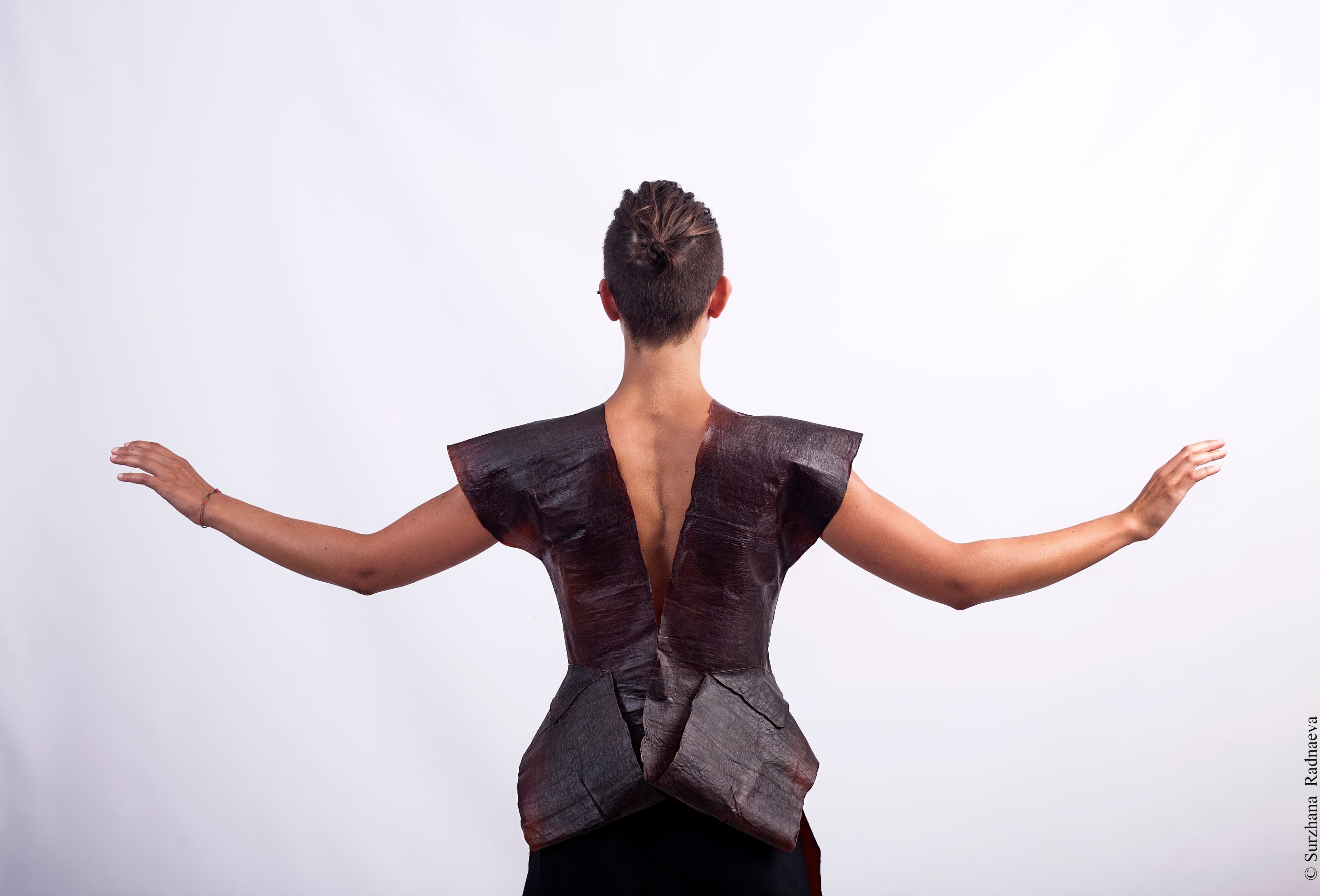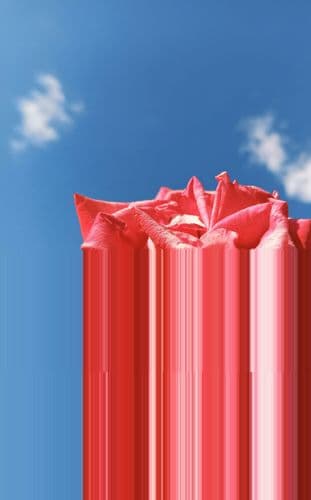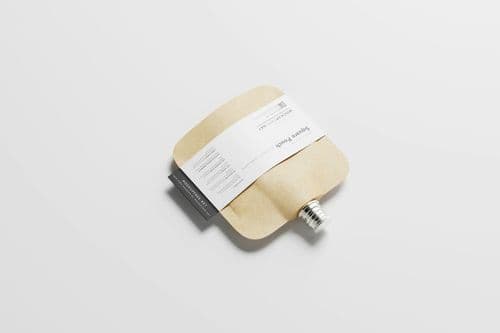Key Points
- reGROW: kombucha-grown bacterial cellulose, dried under gentle tension, yields flat, skin-like films for couture prototypes and speculative wound dressings.
- Stability gained: early curling/cracking fixed by standardising tray dimensions, liquid depth, and controlled tension-drying.
- Performance first: targets are breathability, flex, and moisture exchange; drying artefacts are kept as process marks rather than decoration.
- Bacterial-dyed Buryat dress: an ancestral silhouette rendered with low-impact bacterial pigments and Shibori folding that enables petri-dish dyeing.
- Where it scales now: modular SOPs for cultivation, hybrid use as panels/trims at low-wear zones, compostable end-of-life; near-term fit is couture capsules, performance accents, and medical trial swatches.
Full interview with Surzhana Radnaeva
Can you detail the “Reshaping” process that transitions kombucha from a childhood drink to a material in fashion, medical applications?
Kombucha was once a childhood memory: a sweet, living drink kept on the kitchen windowsill. Years later, in 2018, I saw it differently: not just something to drink, but a medium to grow bacterial cellulose, a material that feels skin-like, yet cool to the touch.
I cultivate the kombucha SCOBY in shallow trays for around two weeks, forming a translucent sheet at the air–liquid interface. Once harvested, it's washed, neutralized, and dried under tension to keep it flat. Each sheet is finished differently based on its purpose.
This transformation: from nourishing drink to second skin, is symbolic. It evolves from an internal sustenance to an external protector, and potentially into medical textiles designed to cover and heal wounds.
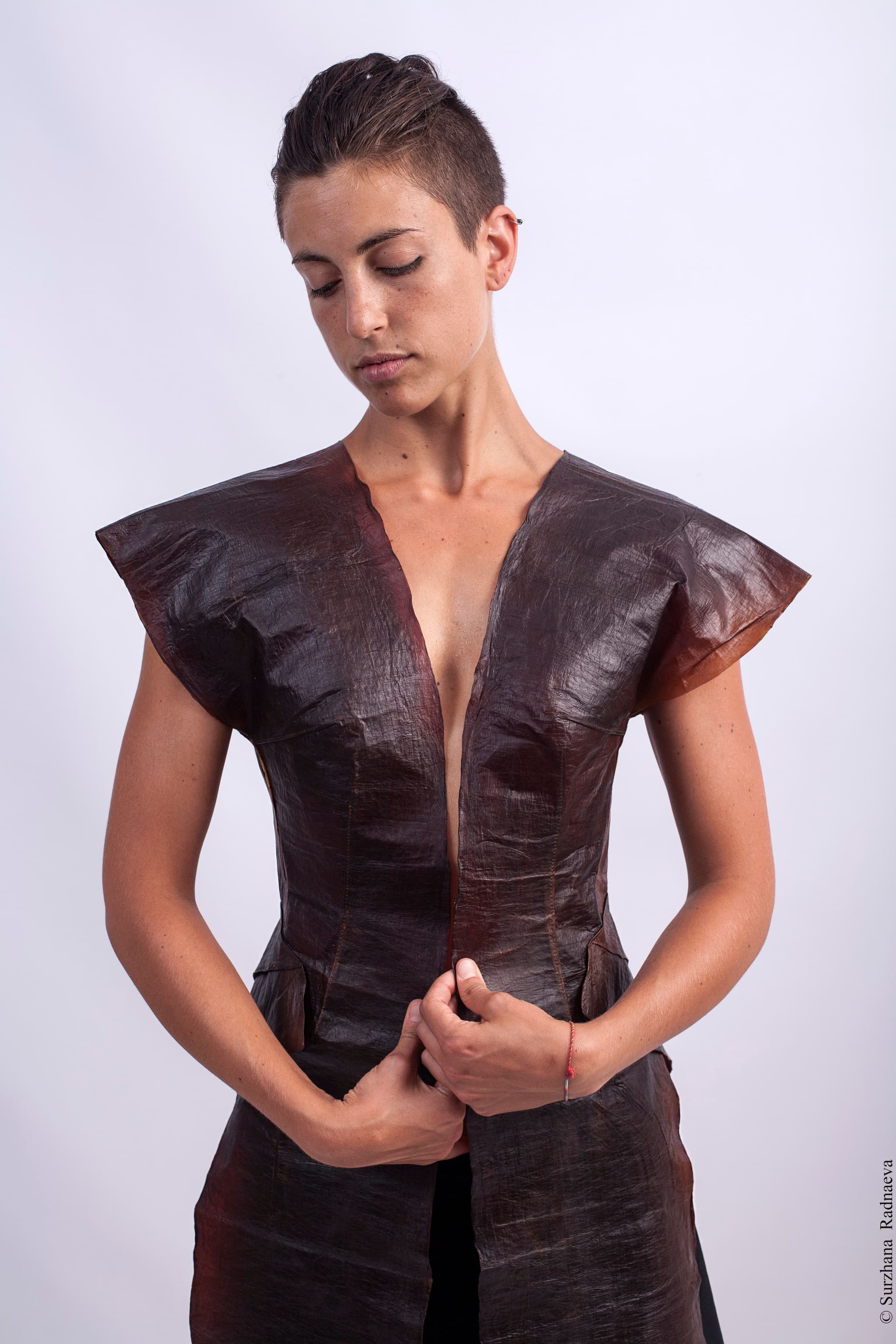
What challenges did you encounter when working with kombucha leather for the first time, and how did you overcome them?
Nothing worked as expected initially. The material dried unevenly, cracked, and curled. It was stubborn, and somehow alive. Over time, I learned to guide, not force. By standardizing trays and liquid depth, and drying under soft tension, the material began to cooperate.
In your project reGROW, how do you balance aesthetics, functional requirements, medical textiles?
Developed with ecosystem designer Benjamin Denjean and Thr34d5, the reGROW project prioritizes function: the material must breathe, bend, and exchange moisture, crucial traits for skin and healing.
But with biomaterials, aesthetics emerge naturally. As the sheet dries, it documents its own history through patterns and gradients. In reGROW, these imperfections become storytelling tools, celebrating the material’s life and transformation.
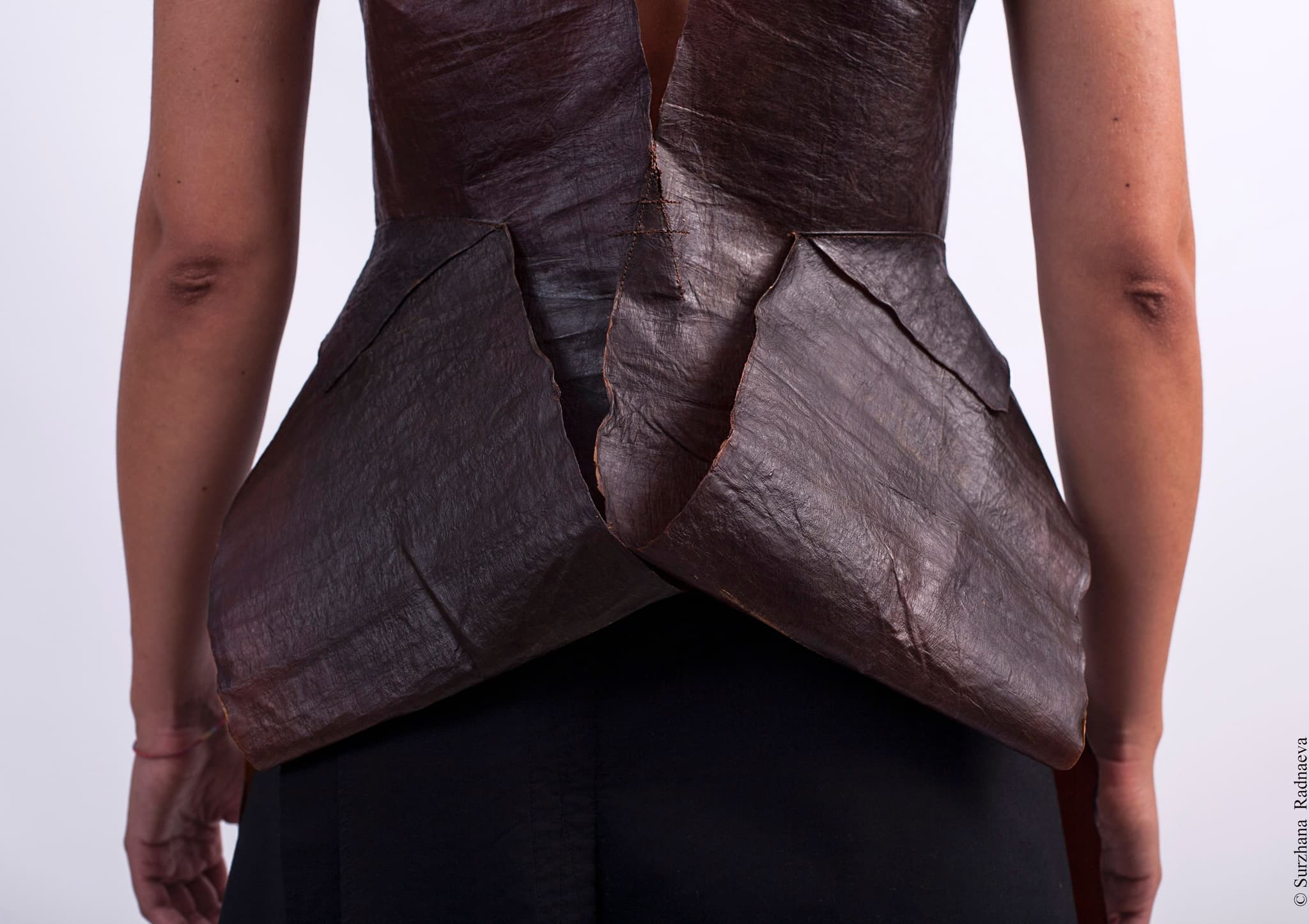
What inspired the integration of traditional Buryat elements into your modern designs, particularly in the BACTERIAL-DYED BURYAT MODERNISED DRESS?
I’m Buryat from Siberia, and that heritage grounds my work. Traditional Buryat garments are layered with meaning, for protection, ceremony, and identity. I wanted to merge these traditions with living materials to see how they reshape each other.
The Modernised Buryat Dress responds to the fading of traditional costumes from daily life. I fused its ancestral silhouette with bacterial dyeing, a process that may become a key ecological dye when resources grow scarce. It’s both preservation and projection, honouring origins while imagining new futures.

How do you ensure the scalability, practicality of using materials like bacterial cellulose, algae in fashion?
It begins with consistency. I grow materials in modular trays and document every variable — sugar ratios, temperatures, drying times, so results are reproducible.
I also use hybrid systems: kombucha leather may serve as panels or trims, combined with conventional fabrics for durability. While still fragile and mostly aesthetic, it already has a role in limited-edition pieces and installations.
Crucially, I consider end-of-life. Both bacterial cellulose and algae-based materials are biodegradable, fitting within a circular fashion model.

Could you explain the significance of using the Shibori tie-dye technique, its impact on the final aesthetic of your garments?
I used Shibori in the bacterial-dyed dress for both practicality and poetry. It allowed me to fold the fabric into petri dishes, but also to record memory. The dye resists and travels, leaving lines, shadows, and depth, traces of resistance and movement.
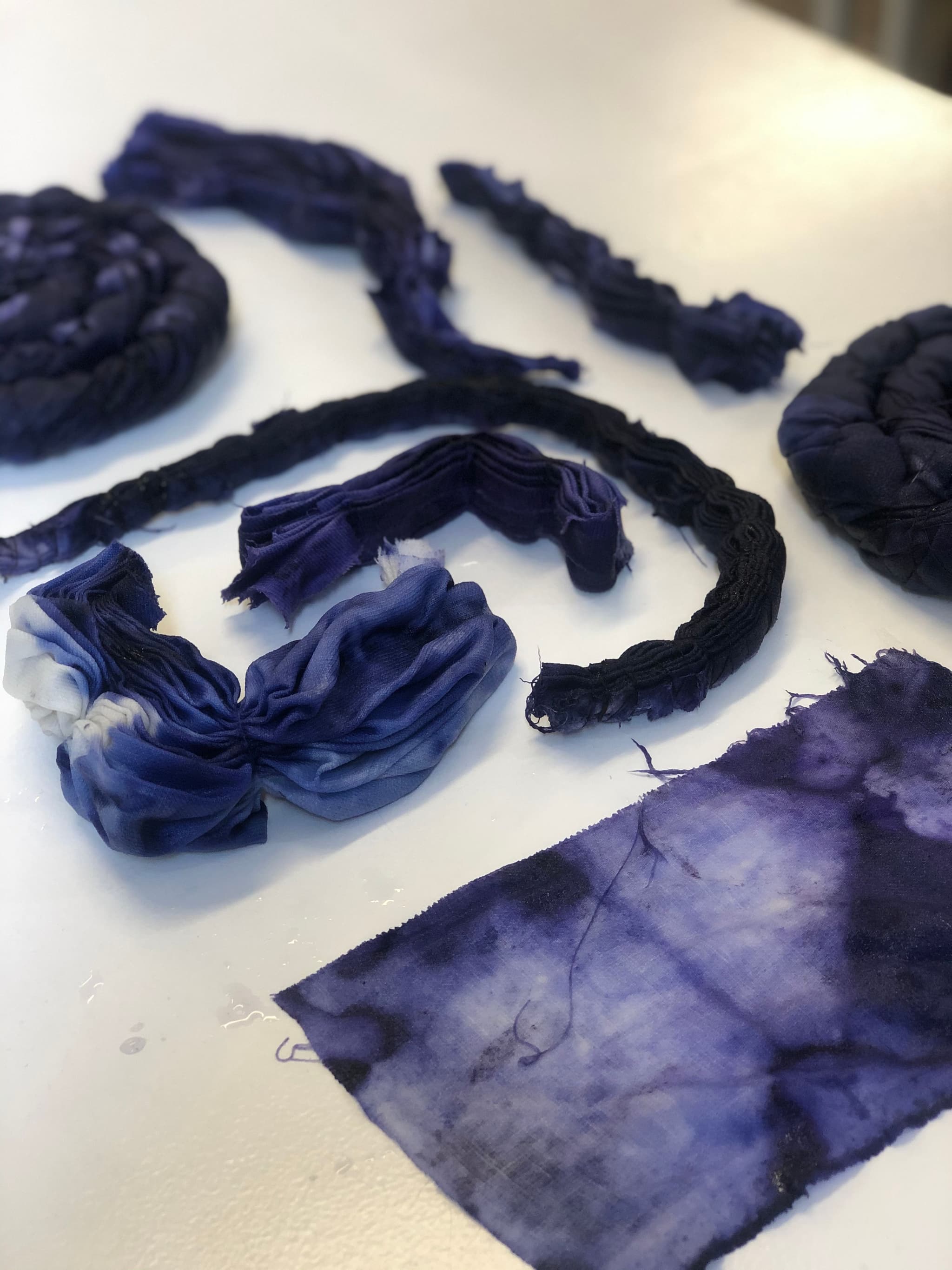
What potential do you see in the use of biomaterials like kombucha leather, algae textiles for mainstream fashion?
These materials are part of fashion’s next language, though still in the research phase. We need more experimentation and trust-building before they scale. Consumers are curious but cautious, these materials feel alien, and need time to be embraced.
In the near term, they are ideal for couture, performance, and artistic collections. But beyond style, they reconnect us with growth, decay, and transformation, the rhythms fashion must relearn.
